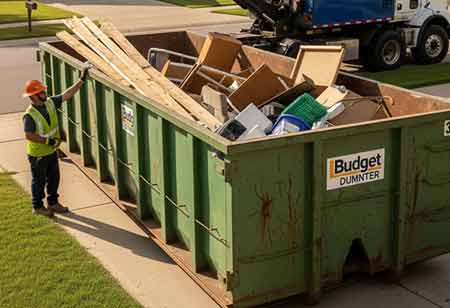Thank you for Subscribing to Environmental Business Review Weekly Brief
Importance of Environmental Site Assessments
Due diligence is paramount in real estate transactions to mitigate risks and ensure informed decision-making.

By
Environmental Business Review | Monday, April 14, 2025
Stay ahead of the industry with exclusive feature stories on the top companies, expert insights and the latest news delivered straight to your inbox. Subscribe today.
Environmental Site Assessments are crucial for assessing ecological risks in property transactions, development projects, and regulatory compliance, ensuring informed decisions and sustainable development practices.
FREMONT, CA: Due diligence is paramount in real estate transactions to mitigate risks and ensure informed decision-making. The Environmental Site Assessment (ESA) is crucial to this process. An ESA comprehensively evaluates a property's environmental conditions to identify potential contamination or liabilities associated with past or present land use. But when is an ESA necessary, and why is it vital? Let's delve into these questions to understand the significance of environmental site assessments.
Understanding Environmental Site Assessments
An ESA typically involves a series of phases, with Phase I being the initial step. In Phase I, environmental professionals thoroughly examine the property's history, land use, and adjacent areas to identify potential environmental concerns. This investigation includes reviewing historical records, conducting interviews, and performing site inspections. The primary goal of Phase I is to determine if any recognized environmental conditions (RECs) warrant further investigation.
Should Phase I reveal potential environmental risks, Phase II may be initiated. Phase II involves physical testing and sampling soil, groundwater, or air to assess the extent and severity of contamination. This Phase provides essential data for understanding the potential impact of contaminants on the property and surrounding environment.
Finally, if contamination is confirmed, Phase III entails remediation efforts, including cleanup and mitigation measures to address environmental liabilities and ensure regulatory compliance.
An Environmental Site Assessment is a Crucial Process
Real Estate Transactions: ESAs are commonly required during real estate transactions, especially for commercial properties. Lenders and buyers often request a Phase I ESA to assess the environmental risks associated with the property before finalizing the deal. By uncovering potential issues early in the process, stakeholders can negotiate terms, allocate costs, or even decide against the purchase if the risks are too significant.
Property Development and Redevelopment: Developers should conduct ESAs to assess potential environmental impacts before embarking on new construction or redevelopment projects. Understanding contamination or regulatory constraints early in the planning stages can help developers make informed decisions, obtain necessary permits, and implement appropriate mitigation measures.
Compliance Requirements: Certain industries, such as manufacturing, mining, or petroleum, are subject to stringent environmental regulations. Companies operating in these sectors may need to conduct regular ESAs to ensure compliance with environmental laws and regulations. Monitoring environmental conditions can also help prevent costly violations and legal liabilities.
Risk Management: P periodic ESAs can be a proactive risk management strategy even for properties with no apparent environmental issues. Environmental liabilities can arise from past activities or nearby sources, making regular assessments essential for identifying and addressing potential risks before they escalate.
The Importance of Environmental Site Assessments
Protecting Human Health and the Environment: ESAs play a critical role in safeguarding human health and the environment by identifying and addressing potential sources of contamination. Early detection and remediation of environmental hazards can prevent exposure to harmful substances and minimize adverse effects on ecosystems.
Legal and Financial Protection: By conducting ESAs, property owners, buyers, and lenders can protect themselves from unforeseen liabilities and financial losses associated with environmental cleanup costs, regulatory fines, and legal disputes.
Maintaining Regulatory Compliance: Compliance with environmental regulations is mandatory for businesses and property owners. Failure to comply with environmental laws results in penalties, litigation, and damage to reputation. Conducting ESAs helps ensure compliance with regulatory requirements and demonstrates a commitment to environmental stewardship.
Enhancing Property Value: Properties with clean environmental records are more attractive to buyers, tenants, and investors. Property owners can identify and address environmental concerns to enhance their assets' marketability and value. Investing in environmental due diligence can yield long-term benefits by minimizing risks and maximizing returns on investment.
More in News





